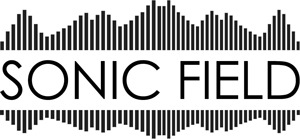Eye of Newt. QUEIXAS
(Insubordinations 2013)
Review by Caity Kerr
Abdul Moimême: two prepared guitars, objects / Cyril Bondi: bass drum, objects / D’incise: laptops, objects
The helvetico-portuguese trio, formerly known as “diatribes & abdul moimême”, founded in 2009, abandons the ego in favour of a tight, homogeneous, construction…
That ‘s good to know, because at least it shows good intentions and music played with such intentions has in the past and often still does turn out to be worth listening to. Furthermore, in respect of the live procedures, d’incise tells me that the musicians re-generate a “field” that the microphones are capturing on the recording. These are good starting point from which to begin an investigatation of the music.
1. An yll wynde that blowth no man to good [9:49]
A densely textured sound field sets the tone for the album, as an expansive aesthetic is brought to bear on the music – not a trace of minimalism anywhere. Although the listener can recognise some of the sources the totality is far more interesting than a collection of nice sounds or timbres (as per the aforementioned tight, homogeneous, construction). There are serious attempts here at exploring complexity across several parameters – the inner motion and vitality of the sounds, their materiality, how they feel on the ear, and to a limited extent (this is live after all) the creation and development of the morphologies. In my opinion the best contemporary electroacoustic music, both live and compositional, takes account of these concerns. The sound field is reasonably consistent and focused throughout and never gives way to irrelevant self-indulgence. Instrumental timbres do intrude quite noticeably and shift the energy level somewhat, but again this is performance and not composition so different conditions apply. Metallic timbres in particular are explored to great effect as are a range of both close and distant sounds merged in same space.
2. Stow the croze [10:12]
This track is characterised by a preponderant low-midrange drone which could be feedback of some sort and which could be done with a good dip at 130Hz because, to be frank, it began to get on my tits after a while. It might be a function of the performance space, but I’d have thought it could be fixed at the mastering stage. Of course, the artists might like it which is fair enough. To my ears it spoils the track a bit by drowning out some well-crafted interactions, and masks to an extent a highly detailed and dynamic sound world in which elements are very cleverly abstracted from whatever sources are in play. I appreciated the definite sense of pace here, different from track 1, similar to the different tempos and mood changes of a jazz ensemble, which tells me that the players are on the same songsheet, listening well to each other, all of which goes a long way to successfully working as a true ensemble. Irksome drone notwithstanding, an intensive timbral exploration is evident throughout (as opposed to simple gestures strung out along a line).
3. Everybody out [19:53]
Although even slower paced and much longer than Stow the croze, this is actually quite an unexpectedly exciting listen, as we wait to hear which of the strands of sound – high frequency tonal sounds, hiss, widefield bassy groans, iterative shuffles – will develop and dominate the field. It delivers a stimulating and complex field with wonderful spatial depth, less on the width, and some fine blending and orchestration. As the music progresses one or two new sounds appear and we are left with and settle into an emerging and receding of the more percussive elements. Some bold explorations of the problematic low midrange come off successfully and are worthy of note, though towards the end some of the lower frequencies start to grate a little. The music becomes slightly more predictable in places but for a live performance this is full of life, invention and musical interest and to top it off gives no quarter to easy or pretty listening.
Overall the music had a tangible sense of conceptual rigour and discipline. I would also point out an excellent balance of two kinds of material: that which seems to ‘run’ itself and material which is more obviously played, which has that engaging sense of agency. This balance is one of the strengths of the wider live electroacoustic project. Another strength, and one that holds promise for further investigation, is this business of working with microphones in the live environment – transforming sounds by means of contrasting close and wide-field microphone placements, mixing and merging various sub-elements of the larger soundfield, creating subtle variations within the combinations as well as radically new combinations. I think this is one of the ways that contemporary music should be heading to get out of some of the current fashionable impasses. You won’t be selling face cream with this soundtrack.
Finally, I’m intrigued by the artists’ own description of their music as between post-industrial “saudade” , electroacoustic and reductionism. Are we close to wabi-sabi here with this mention of saudade – the longing and nostalgia, perhaps a tinge of our Western melancholy as a response to the old, the perished and the imperfect?


